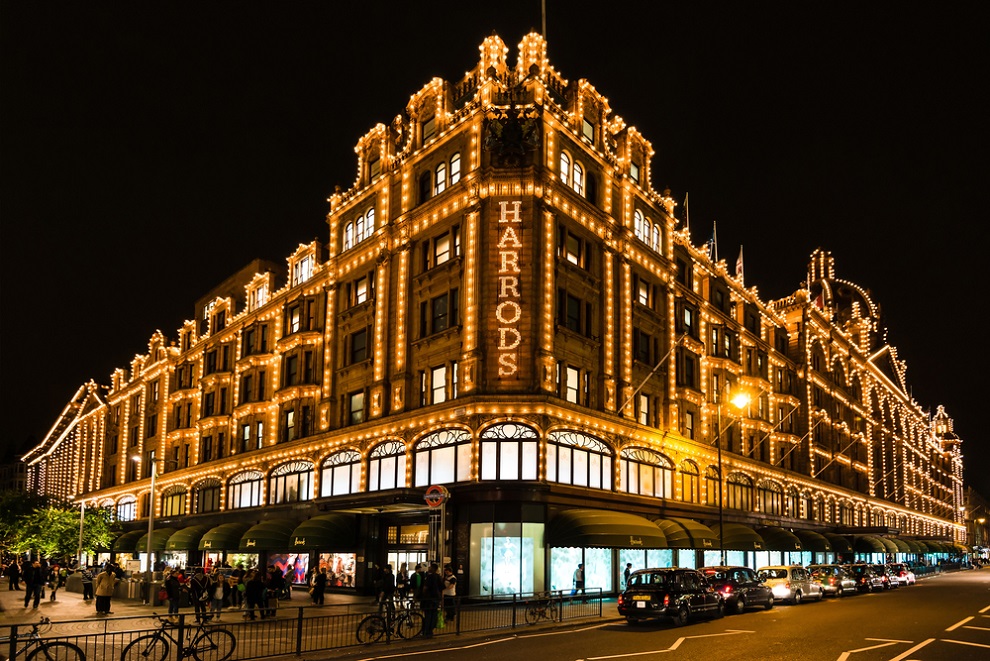Department Stores in London
For years London has been the home to some of the most luxurious and famous department stores in the world with centuries worth of quality, service and tradition and boasting a customer list full of the rich and famous. Here we will go through the history of some of these stores and explore their inner and outer workings.
Harrods
Harrods is undoubtedly the most famous department store in the world. Harrods was established by Charles henry Harrod and started as a grocery store in 1849. Known even then for quality service they expanded into a retail store employing dozens of people by the 1880s. In 1883 the store burned down, and a new store was built which is the one you still see today. At this time, they had customers including Charlie Chaplin, Oscar Wilde, and members of the Royal family.
The store has over 300 departments which at one time even included an exotic pet shop. The store has everything you could possibly want to buy from clothing, make-up, food, furniture, and jewellery, even having a floorspace just for pens.
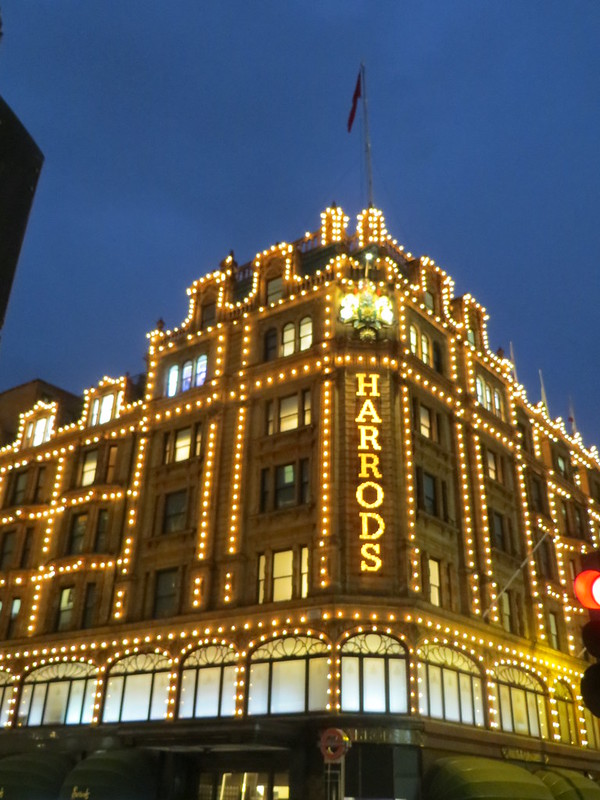
The store is a marvel of technology, they were the first in the UK to employ the use of an escalator. The store is supplied with its own water supply pumping thousands of gallons of water to the store each day as well as meeting its own energy supply using its own power generators.
The was briefly owned by House of Fraser between 1959 and 1985 and was recently sold to Qatar Holdings, effectively making it property of the state of Qatar. Because of the store’s fame and prestige, it shows no signs of going out of business, like other department stores in the past.
Selfridges
Selfridges is the second largest department store in London, it was founded by Harry Gordon Selfridge in 1908 and opened its doors in 1909 at its flagship store location on Oxford Street. Selfridges was known early on for its cutting-edge marketing and innovative displays and techniques which define the modern department store today.
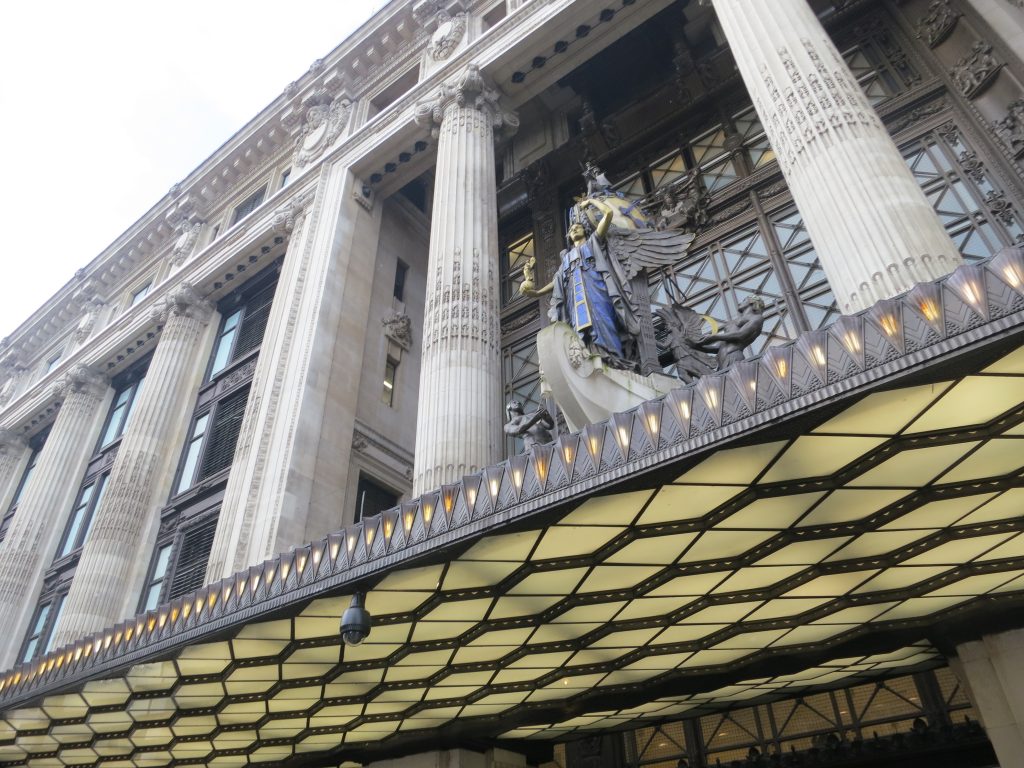
Like all department stores, Selfridges has always had incredible displays that captures the imagination of children who see them, and inevitably increase sales for the store. The window displays have included animatronics and decorative Christmas lighting, as well as displays of toys available in the store.
The store is also known for its rooftop, which in the 1920s contained various cafes, and mini golf course and a terraced garden which was destroyed by bombing during the Second World War, holding events on the Rooftop of the building was revived 2011 and to this day to host events, restaurants, and bars.
In 1965, Selfridges was bought by Sears, an American department store chain but has since become a private company and expanded its stores to include two stores in the greater Manchester area and a store in the famous Birmingham Bullring, a marketplace going back to the middle ages.
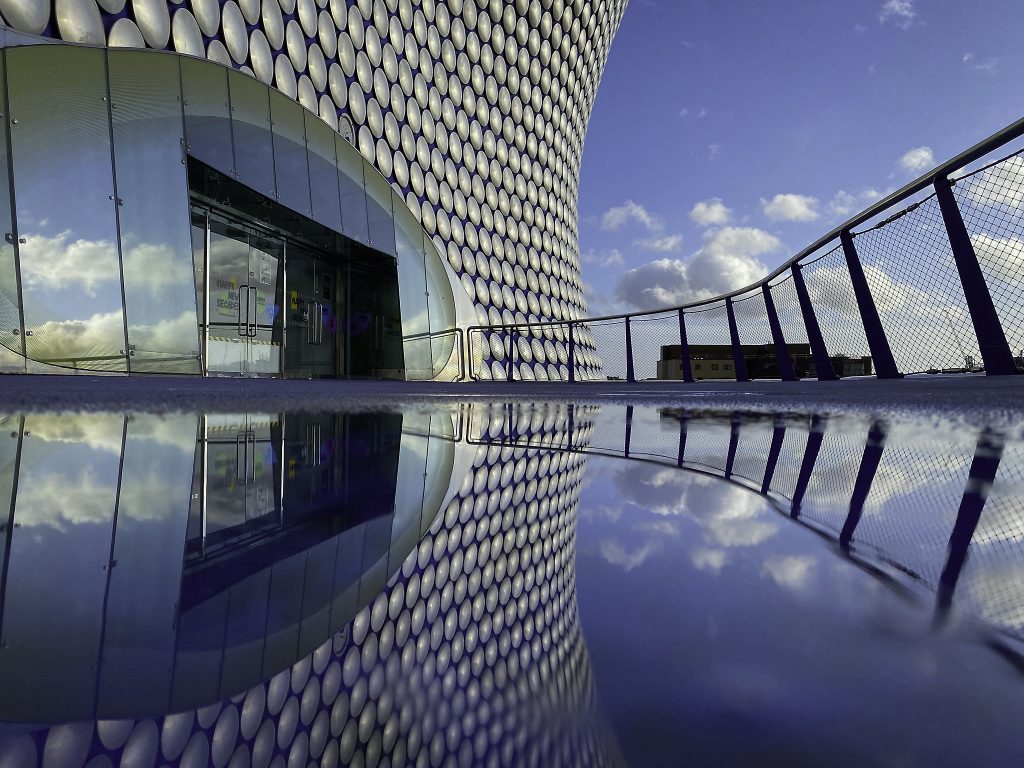
Liberty
Founded in 1874 by Arthur Lasenby Liberty, the store has been a staple for exquisite fabrics since the beginning and housed some of the most exotic textiles from India and Japan. Since the 1890s, the Liberty store has worked closely with British designers and artisans such as Archibald Knox, with many brands having originally first been for sale at Liberty.
One of the most famous things About the Liberty Store is its building, built in a Tudor rival style with the wood of two British battleships, it was part of the ambitious dream Arthur Liberty had set. He died before it was completed in 1924.
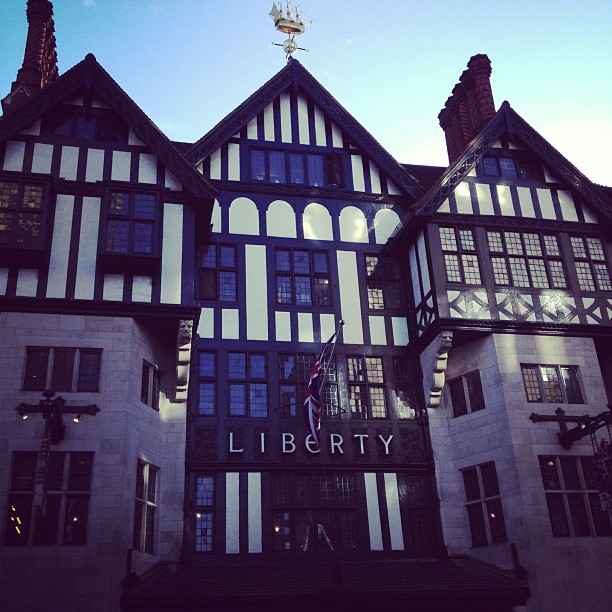
Despite not selling toys, Liberty has had breath-taking window displays like other department stores in order to promote the store and increase sales. They make good use of their fabrics to decorate the windows and have specific themes throughout the store, it is a very ingenious marketing strategy.
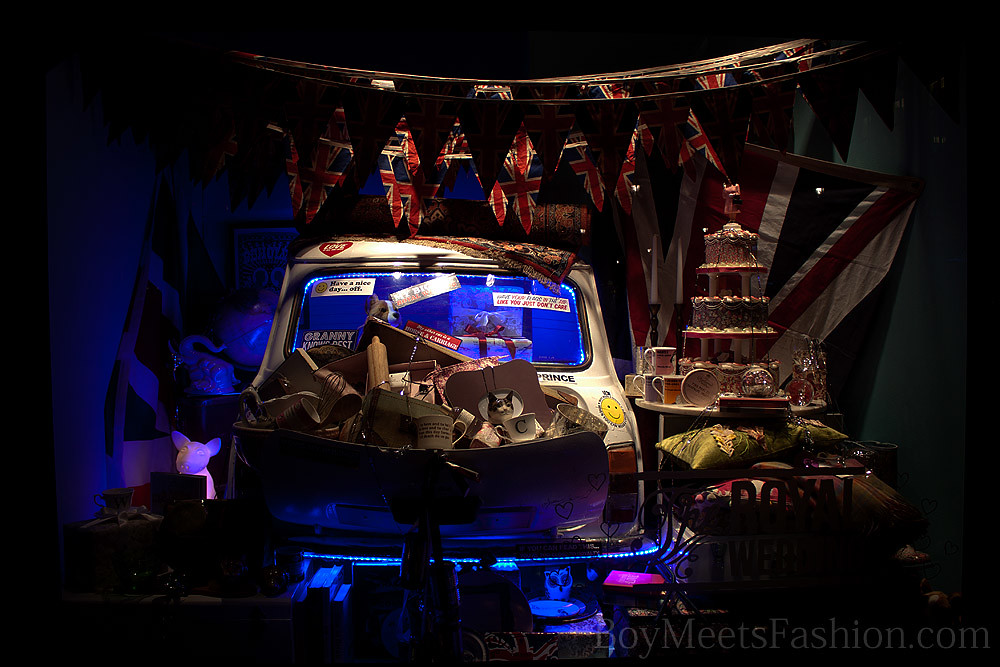
In the modern era, Liberty was expanded to include other items such as homeware, perfume, and clothing lines. It has also expanded into Japan and sells its products in Japanese stores. Liberty has managed to stay relevant due to the store managing to combine both tradition and modernity.
Fortnum & Mason
Fortnum & Mason was founded by William Fortnum and Hugh Mason in 1707, making it one of the oldest stores in the UK at over 300 years old. It started as a grocery shop but soon expanded into a prestigious store that it is today.
Just like all the Department stores, Fortnum & Mason celebrate Christmas with flamboyant displays full of Christmas decorations and merchandise.
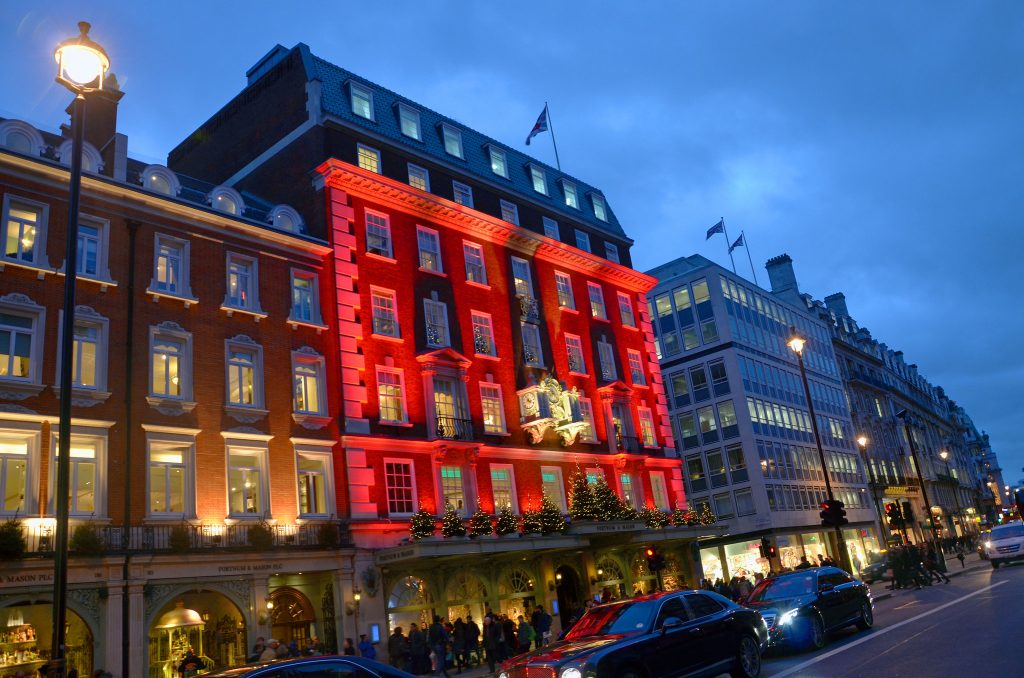
Fortnum & Mason was built largely on the royal connection the store and one of its founders William Fortnum had, being a footman for Queen Anne and selling candles from the palace. His grandson Charles also worked for the Royal family, in service of Queen Charlotte. Queen Victoria also sent goods from Fortnum & Mason to soldiers in the Crimean war and in 1902 King Edward VII was supplied the ‘finest tea in all of the land’ by Fortnum & Mason, aptly called Royal Blend. They even held an event for Queen Elizabeth II on her diamond jubilee which she was present for. Undoubtedly, the success of the store can be attributed to the Royal Connection the Store enjoys.
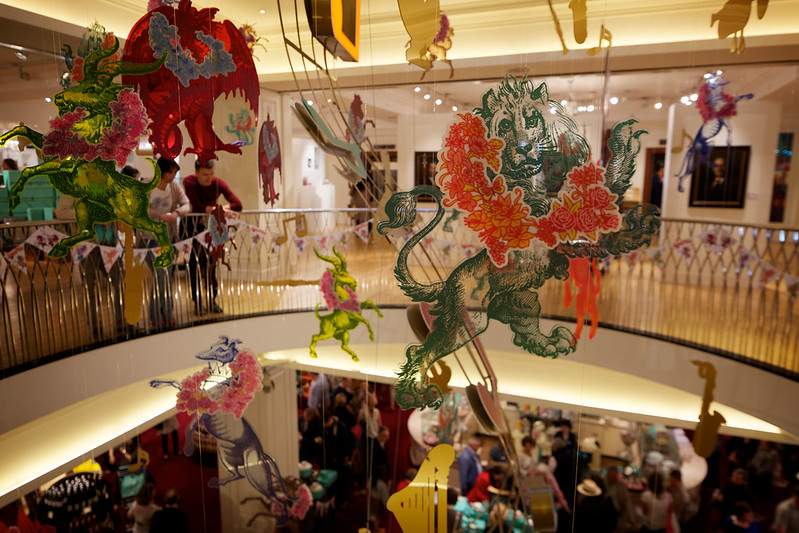
Courtesy-Aurelien Gouchard 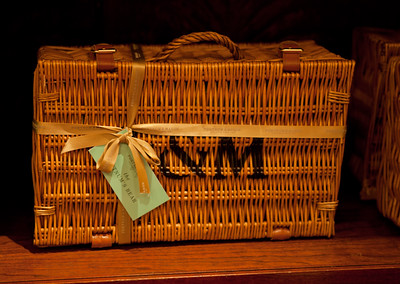
Courtesy-Andi Fisher 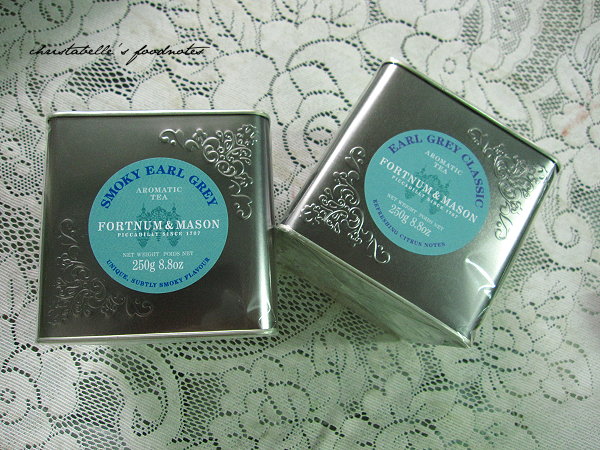
Courtesy-Christabelle
Today the Store sells many luxury goods including tea, confectionery, wine and homeware like glass and porcelain which show how much they have expanded since being a grocery shop 300 years prior.
Sources used and further reading
Callery, Sean. Harrods, Knightsbridge: the story of society’s favourite store. London. Ebury Press. 1991
Christopoulou, Martha. Exploring Shop Window Displays. Art Education. Volume64, Issue 3. May 2011. pp. 25 – 32
Honeycombe, Gordon. Selfridges: Seventy-five Years: The Story of the Store, 1909-1984. London. Selfridges Ltd. 1984.
Orr, Emily M. Designing the department store: display and retail at the turn of the twentieth century. London. Bloomsbury Publishing. 2019.
Sen, Sankar. Block, Lauren G. Chandran, Sucharita. Window displays and consumer shopping decisions. Journal of Retailing and Consumer Services. Volume 9, Issue 5. September 2002. pp. 277-290
Stobart, Jon. Cathedrals of Consumption? Provincial Department Stores in England, c.1880–1930. Enterprise & Society. Volume 18, Issue 4. December 2017. pp. 810 – 845
https://www.fortnumandmason.com/our-history-timeline
https://www.selfridges.com/GB/en/features/articles/content/the-history-of-theselfridgesroof/
https://www.londonperfect.com/blog/2019/04/london-department-stores/

